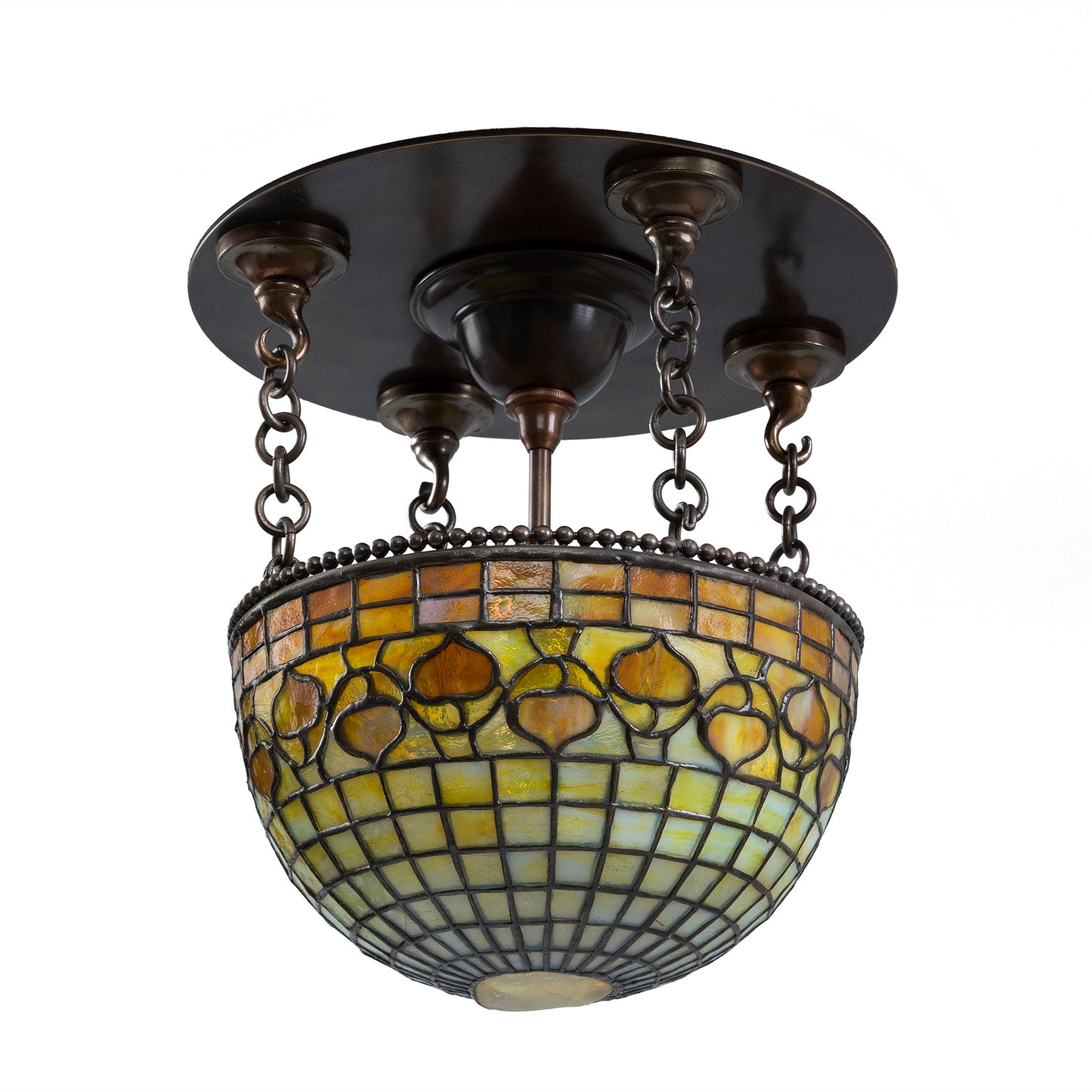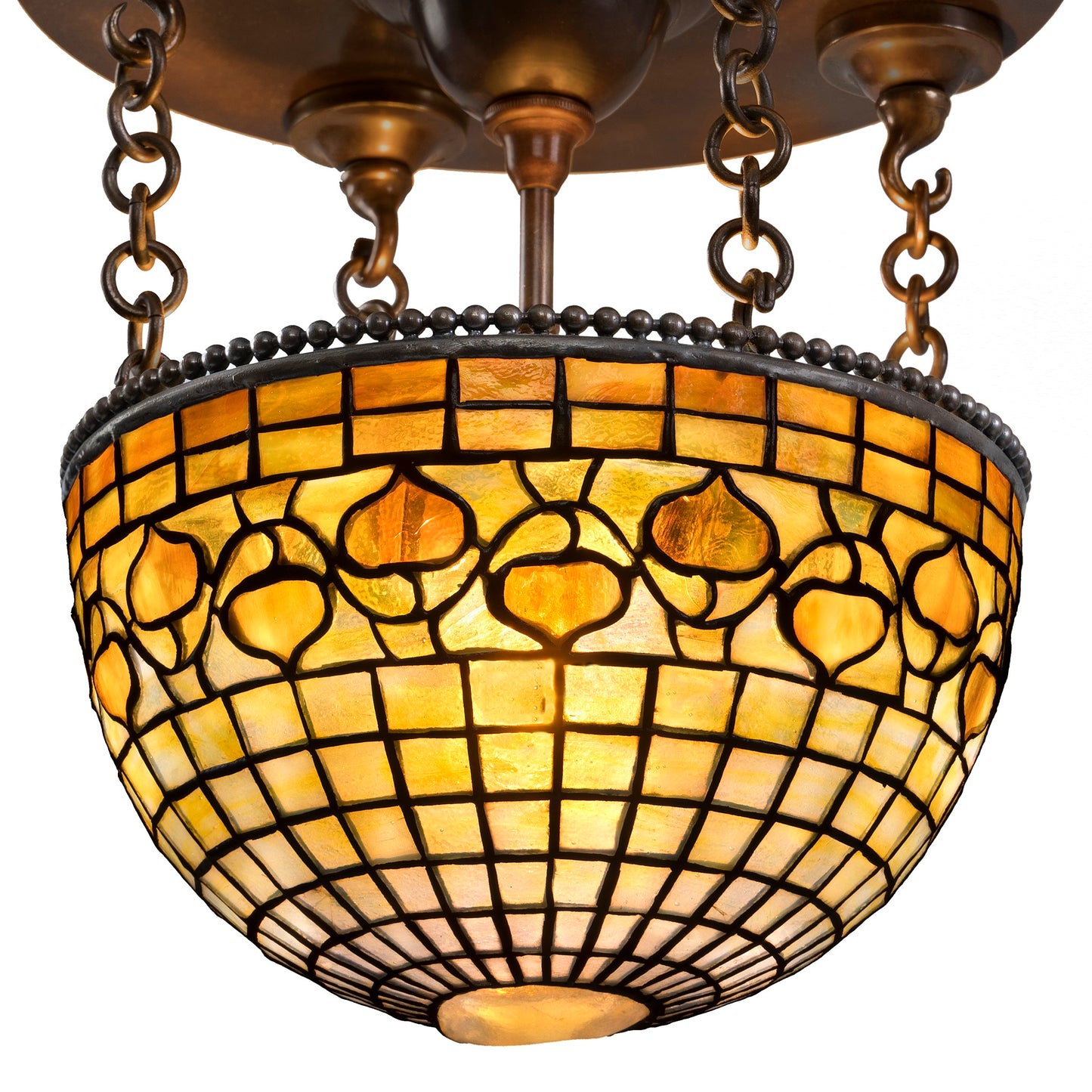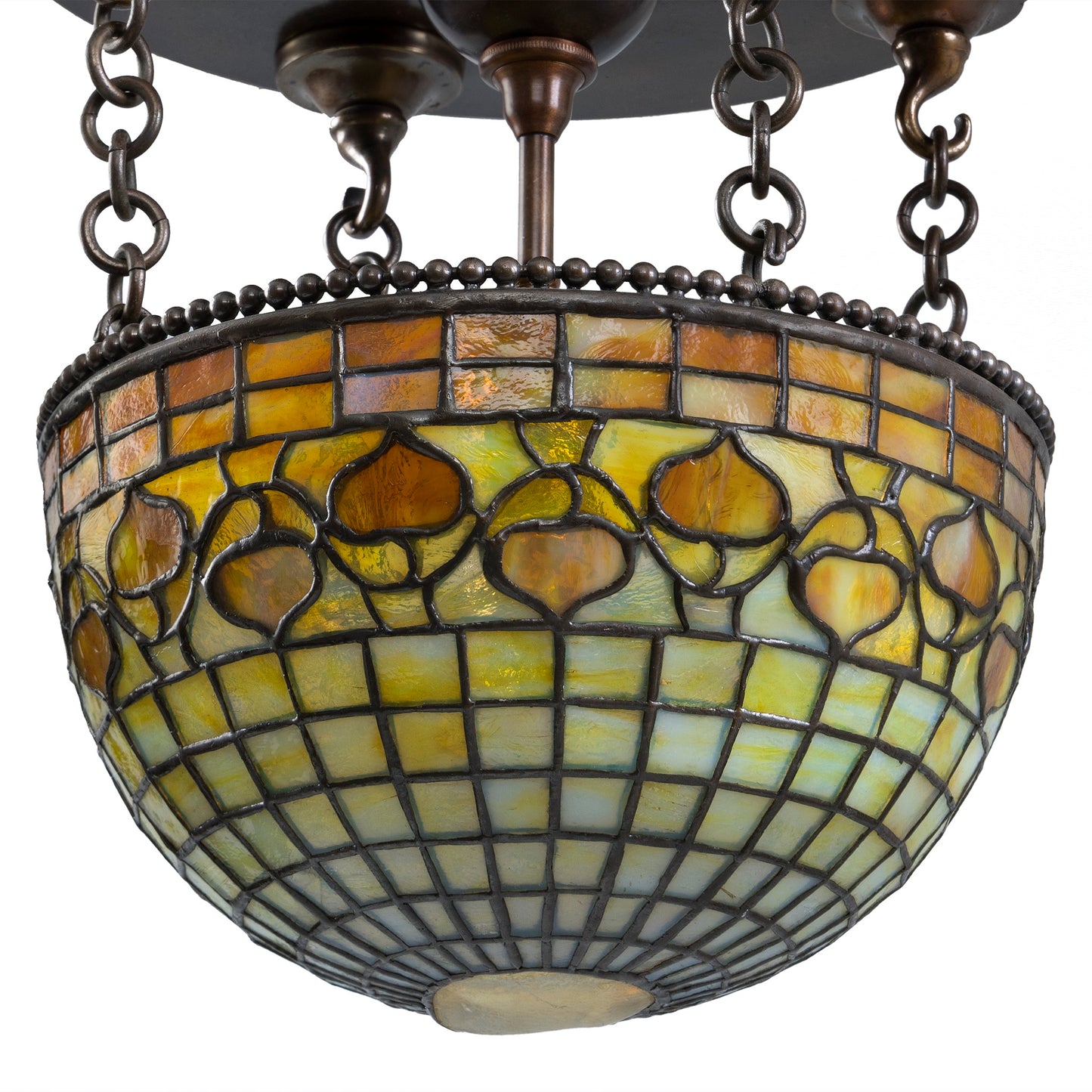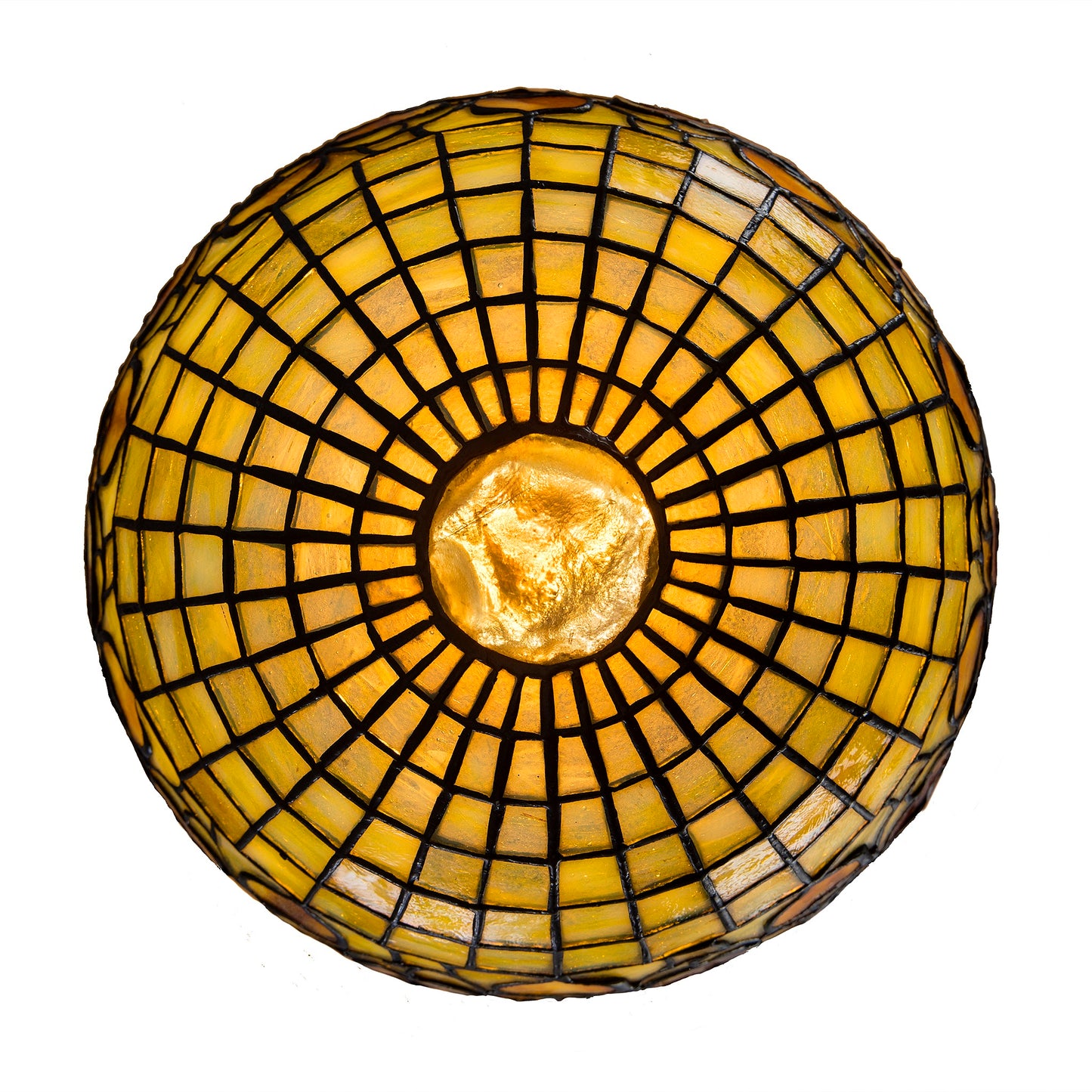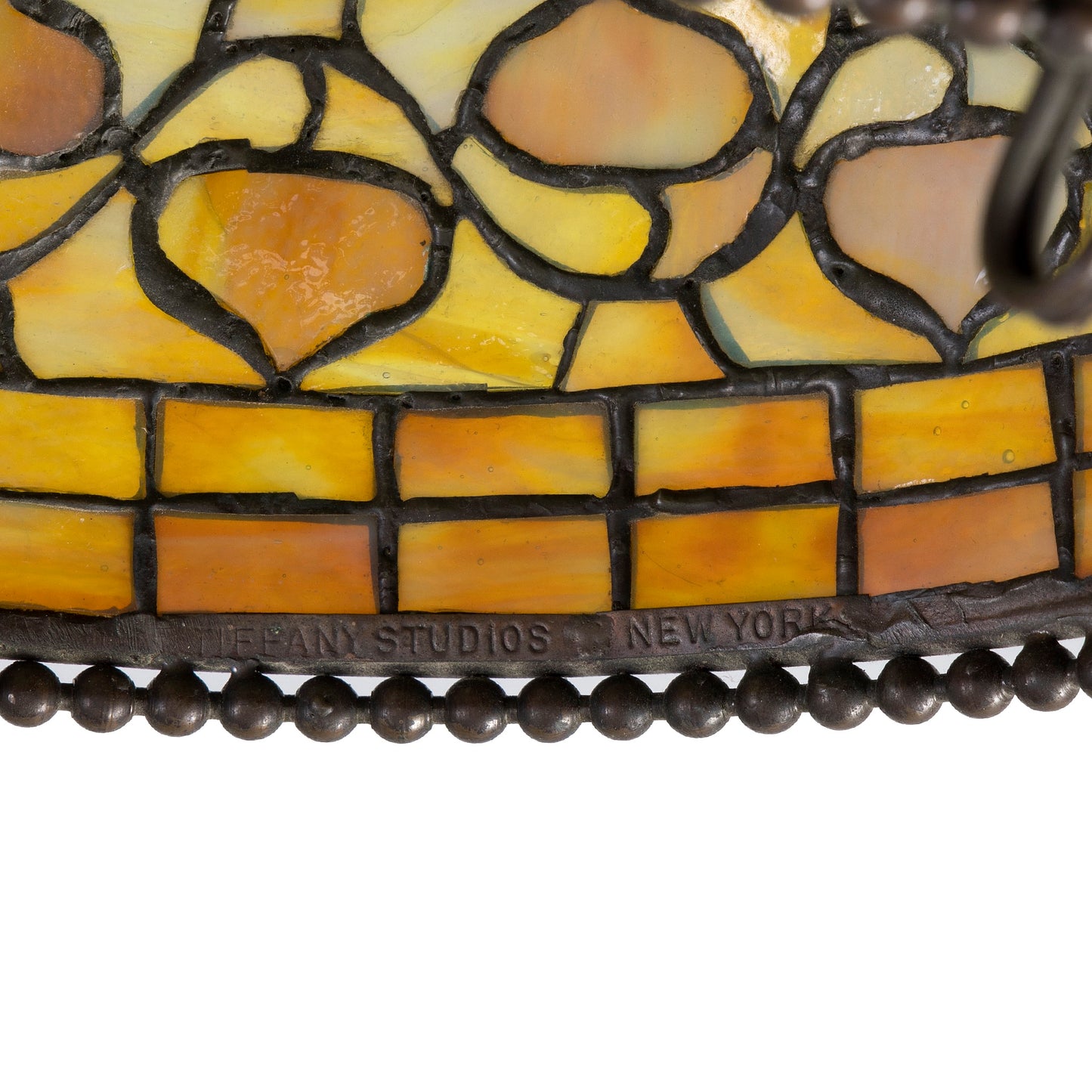Tiffany Studios New York "Vine Border" Plafonnier
Item #: L-21484
Artist: Tiffany Studios New York
Country: United States
Circa: 1910
Dimensions: 11.5" diameter, 12" height {Shade: diameter 10", 6" height}
Materials: Leaded Glass, Bronze
Shade Signed: Tiffany Studios New York
Literature: A. Duncan, Tiffany Lamps and Metalware, Suffolk, 2019, pp. 152, no. 625 (shade)
Item #: L-21484
Artist: Tiffany Studios New York
Country: United States
Circa: 1910
Dimensions: 11.5" diameter, 12" height {Shade: diameter 10", 6" height}
Materials: Leaded Glass, Bronze
Shade Signed: Tiffany Studios New York
Literature: A. Duncan, Tiffany Lamps and Metalware, Suffolk, 2019, pp. 152, no. 625 (shade)













